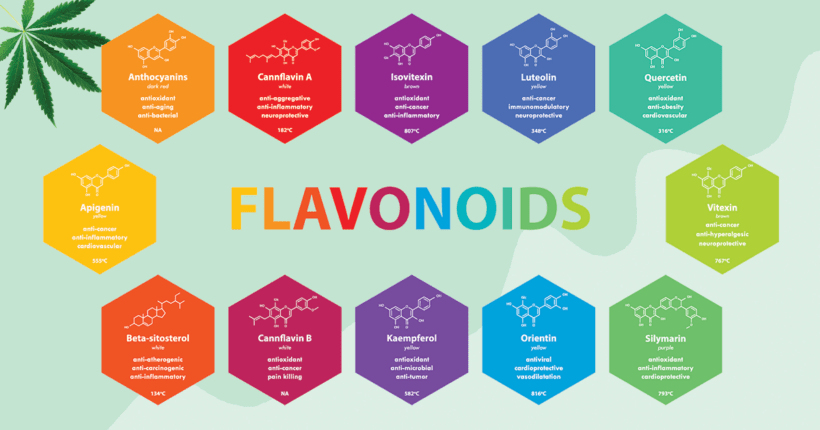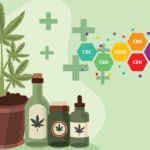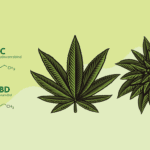Key takeaways:
- Flavonoids are plant compounds that contribute to the vibrant colors of plants, including cannabis.
- Flavonoids have beneficial properties like anti-inflammatory and neuroprotective effects. They work in synergy with cannabis cannabinoids and terpenes.
- If you want to benefit from flavonoids, go with hemp flower and full or broad-spectrum CBD products.
Flavonoids are natural compounds with antioxidant, anti-inflammatory, and other beneficial effects.
They’re found in a wide variety of plants, including cannabis, and contribute to the vibrant colors of flowers, fruits, and vegetables. For example, flavonoids called anthocyanins produce red, purple, and blue hues.
Alongside cannabinoids and terpenes, flavonoids play a role in the benefits of CBD and other cannabis-derived products. Research in this area is just beginning, but the early findings are promising.
Here’s what you should know about flavonoids, their interplay with CBD, and how you can find flavonoid-rich CBD products.
Table of Contents
Types of Flavonoids
Depending on their structure, flavonoids can be divided into six main classes: flavanones, flavones, flavonols, flavan-3-ols, anthocyanins, and isoflavones. In cannabis, the two most common ones are flavonols and flavones (1).
Flavanols
Flavanols are a subclass of flavonoids abundant in bananas, apples, blueberries, peaches, pears, and other plants (2). Consumption of flavanols is associated with a reduced risk of cardiovascular disease (3).
Flavones
Flavones are another subclass of flavonoids, which are rich in celery, parsley, red peppers, chamomile, mint, and citrus fruit peels (2). Flavones are also the main type of flavonoids found in cannabis plants.
Cannaflavins
There’s also a special class of flavones called cannflavins, which are only found in cannabis (although one of them has also been found in the flowering plant Mimulus bigelovii) (1). They include cannflavin A, B, and C, with research suggesting potent anti-inflammatory effects.
One study found that cannflavins A and B were about 30 times more effective than aspirin at inhibiting PGE2, a molecule involved in inflammation (1).
Another advantage of cannaflavin A is that it doesn’t suppress cyclooxygenase (COX) enzymes as strongly as aspirin and other non-steroidal anti-inflammatory (NSAID) drugs, which can cause side effects such as stomach ulcers.
Studies have also found other beneficial effects, including anticancer, neuroprotective, antiparasitic, and antiviral properties.
Benefits of Flavonoids
Research suggests that flavonoids have a wide range of potential health benefits, with the most notable being: (4)
- Antioxidant Effects: Flavonoids are powerful antioxidants that can protect the body from damage caused by free radicals.
- Anti-inflammatory Effects: Flavonoids have notable anti-inflammatory effects.
- Cardioprotection: Flavonoids may help reduce the risk of cardiovascular disease.
- Neuroprotection: Flavonoids may protect neurons from neurodegenerative conditions such as Parkinson’s and Alzheimer’s disease.
- Cancer Protection: Flavonoids can suppress cell growth and have anticancer properties.
Flavonoids and the Entourage Effect
After cannabinoids like CBD and terpenes, flavonoids are the third most important group of active molecules found in cannabis. The synergic interactions between this trio are known as the entourage effect. It explains why whole-plant cannabis preparations seem to offer greater benefits than pure CBD or THC (5).
One 2001 paper by esteemed cannabis researcher Dr. Ethan Russo proposes several ways flavonoids could synergize with cannabinoids: (6)
- Counteracting or working together with THC by affecting certain enzymes and the inflammatory molecule TNF-a
- Recycling CBD as an antioxidant
- Synergizing with cannabinol (CBN) by downregulating the inflammatory NF-kB pathway
But research in this area is in its early stages, so we don’t know too much about the role of flavonoids in the entourage effect.
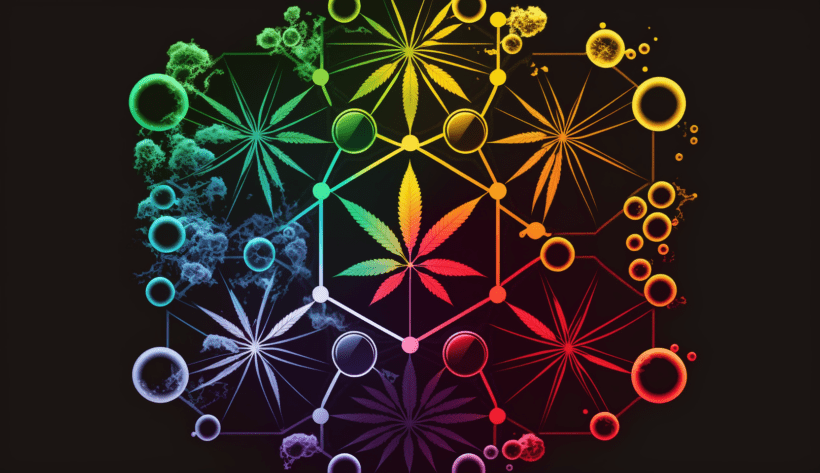
Flavonoids in CBD Products
Since CBD products are derived from hemp, which is a CBD-rich variety of cannabis, they can also contain flavonoids.
In particular, full-spectrum and broad-spectrum CBD products should contain multiple flavonoids because they contain whole-plant extract (7).
In contrast, products made with pure CBD isolate, like pure CBD oil, don’t contain any flavonoids or other compounds besides CBD.
Common CBD Flavonoids and Their Effects
Researchers have identified at least 26 flavonoids in cannabis (8). The ones most commonly found in cannabis and hemp-derived CBD products include: (4)
| Flavonoid | Effects | Also found In |
| Quercetin | Antioxidant, anti-inflammatory, anticancer, cardioprotective | Onions, grapes, berries, cherries, citrus fruits |
| Apigenin | Anxiolytic, neuroprotective, potential for depression and epilepsy (9) | Parsley, chamomile, celery, oregano, tea, wine, and other plant sources |
| Kaempferol | Antioxidant, anti-inflammatory, potential for cancer, diabetes, cardiovascular disease | Green leafy vegetables (spinach, kale), herbs (dill, chives) |
| Luteolin | Antioxidant, anti-inflammatory, anticancer, antidiabetic, neuroprotective (10) | Celery, parsley, broccoli, onion leaves, carrots, peppers, cabbages, apple skins |
| Cannflavins A, B & C | Anti-inflammatory, antioxidant, anticancer, neuroprotective, antiviral, antiparasitic (1) | Unique to cannabis |
Finding CBD Products With Flavonoids
If you’re interested in trying CBD products with flavonoids, choosing full-spectrum or broad-spectrum formulas is important. These products contain all of the cannabinoids, terpenes, and flavonoids found in the hemp plant, which work together in synergy to strengthen the effects of CBD.
An even better option is to use hemp flower because it’s unprocessed and will thus contain the highest levels of both flavonoids and terpenes.
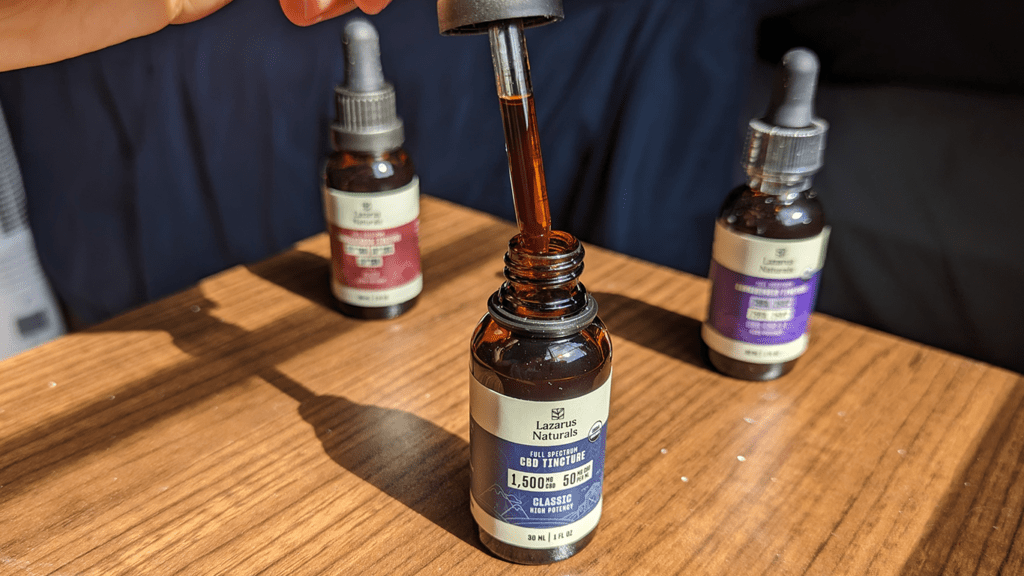
Flavonoids Matter
Flavonoids are natural compounds found in plants, including cannabis and hemp. They have been shown to have a wide range of potential health benefits, including antioxidant, anti-inflammatory, and neuroprotective effects.
However, we don’t yet know much about the role of flavonoids in cannabis and particularly their involvement in the entourage effect since most of the current research has focused on cannabinoids and terpenes.
If you want to benefit from flavonoids in CBD products, you should opt for whole-plant, full-spectrum, or broad-spectrum options. In particular, I recommend high-quality full-spectrum CBD oil.
FAQs
Sources
- Bautista, Johanna L., Shu Yu, and Li Tian. “Flavonoids in Cannabis sativa: Biosynthesis, bioactivities, and biotechnology.” ACS omega 6.8 (2021): 5119-5123.
- Panche, Archana N., Arvind D. Diwan, and Sadanandavalli R. Chandra. “Flavonoids: an overview.” Journal of nutritional science 5 (2016): e47.
- Perez-Vizcaino, Francisco, and Juan Duarte. “Flavonols and cardiovascular disease.” Molecular aspects of medicine 31.6 (2010): 478-494.
- Ullah, Asad, et al. “Important flavonoids and their role as a therapeutic agent.” Molecules 25.22 (2020): 5243.
- Russo, Ethan B. “The case for the entourage effect and conventional breeding of clinical cannabis: no “strain,” no gain.” Frontiers in plant science (2019): 1969.
- McPartland, John M., and Ethan B. Russo. “Cannabis and cannabis extracts: greater than the sum of their parts?.” Journal of Cannabis Therapeutics 1.3-4 (2001): 103-132.
- Cather, Jennifer Clay, and J. Christian Cather. “Cannabidiol primer for healthcare professionals.” Baylor University Medical Center Proceedings. Vol. 33. No. 3. Taylor & Francis, 2020.
- Jin, Dan, et al. “Secondary metabolites profiled in cannabis inflorescences, leaves, stem barks, and roots for medicinal purposes.” Scientific Reports 10.1 (2020): 1-14.
- Salehi, Bahare, et al. “The therapeutic potential of apigenin.” International journal of molecular sciences 20.6 (2019): 1305.
- Zang, Yanqing, Kiharu Igarashi, and Yu Li. “Anti-diabetic effects of luteolin and luteolin-7-O-glucoside on KK-A y mice.” Bioscience, Biotechnology, and Biochemistry 80.8 (2016): 1580-1586.

Gleb is a freelance writer from Vancouver, Canada specializing in CBD and cannabis. He’s read thousands of studies on CBD and other supplements, helping him translate complex science into plain language. Gleb has tried and reviewed dozens of CBD brands and products, written third-party testing reports, and knows the CBD industry inside and out. When not writing, he likes to kickbox, travel, and tell everyone how awesome intermittent fasting is.

